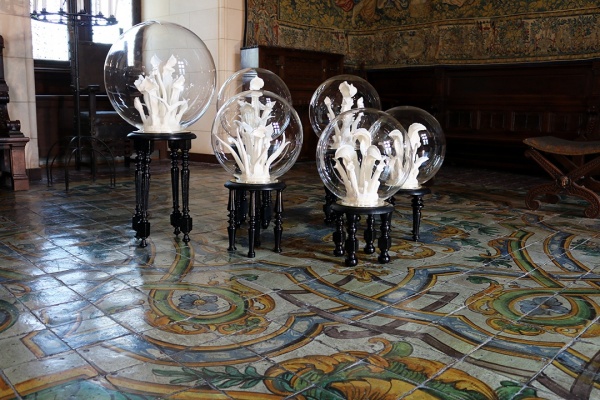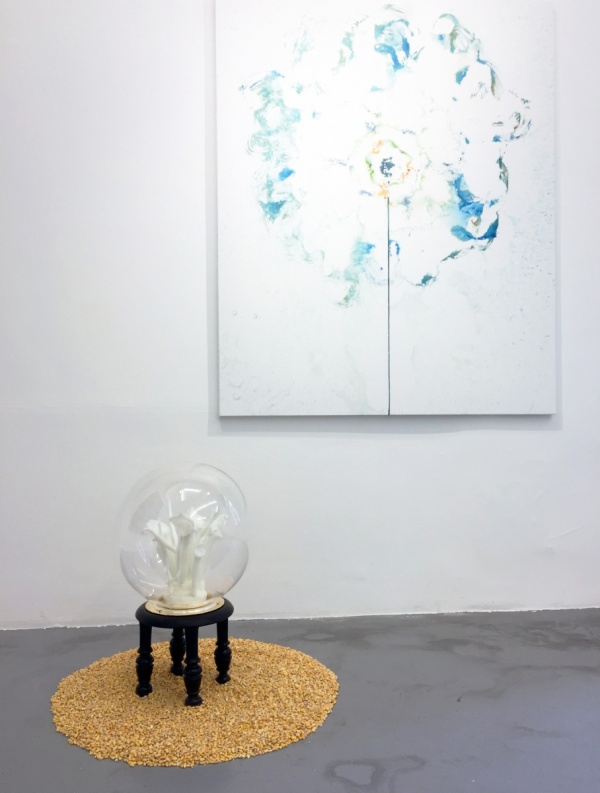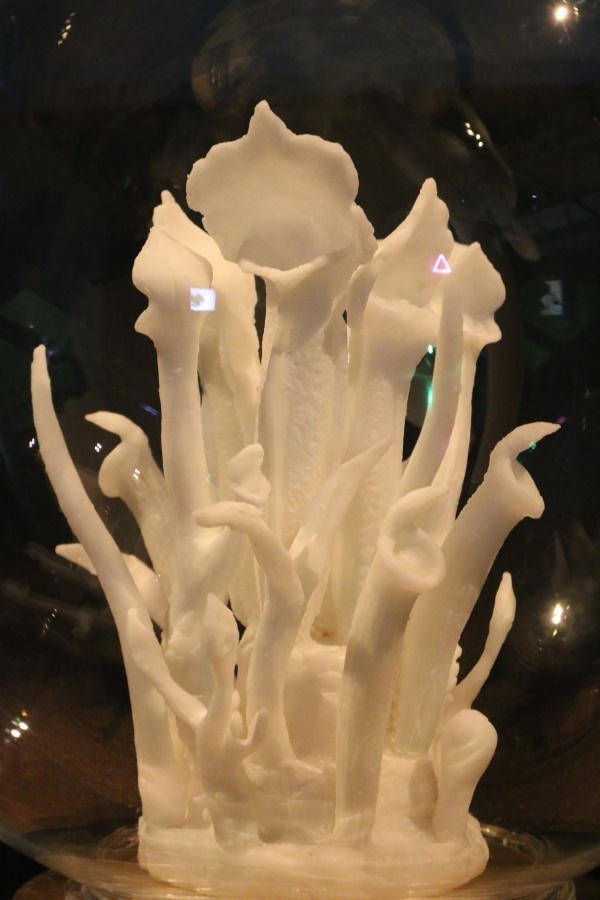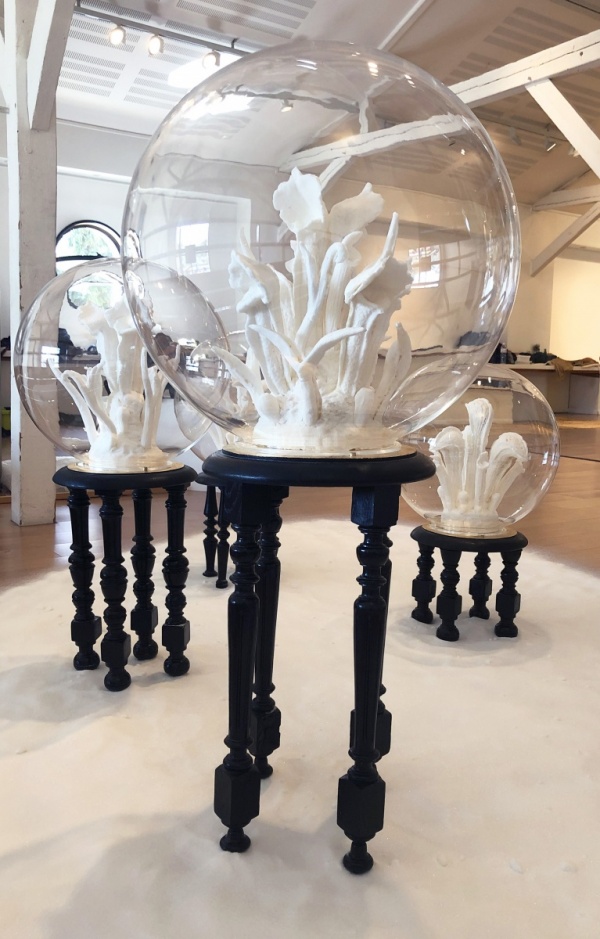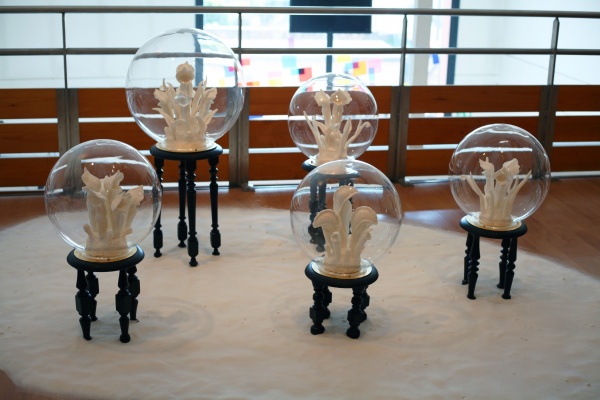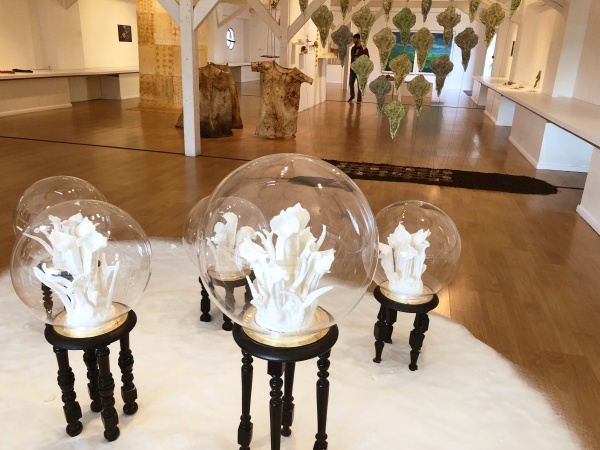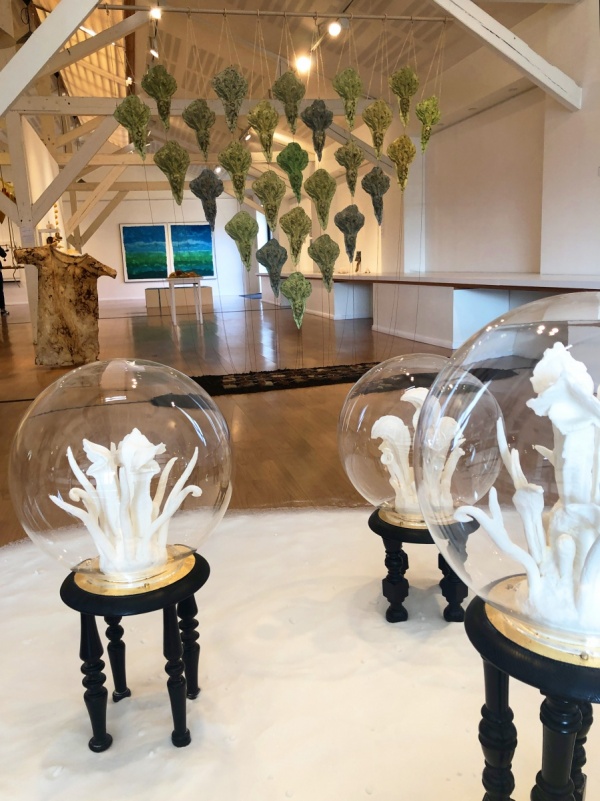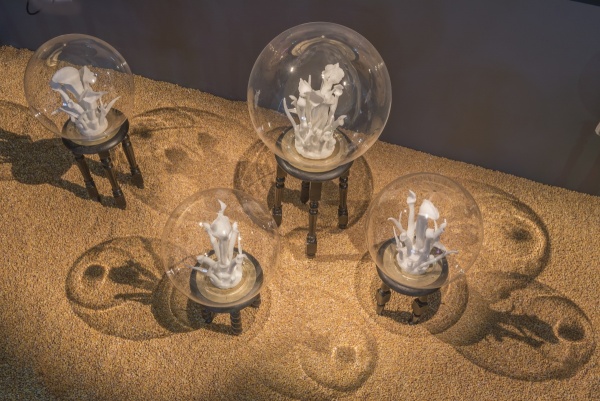saccharomania/ palmatomania, 2017
Sculpture set
Carnivorous plants in pastilled sugar or palm-oil wax
Plastic and wood dome, sugar or corn floor
Saccharomania
The name and shape of these objects are a direct reference to an English fad, pteridomania. In the 19th century, the fashion for terrariums to grow delicate plants from faraway lands exploded among the Victorian bourgeoisie. Inspired by the Wardian cases - portable greenhouses that enabled new plant specimens to be transported and preserved alive by sea from across the Atlantic - furniture designers competed in extravagance to create plant furniture for Victorian interiors. These intricate settings are mainly home to ferns (the pteridophytes of the name), but also to rare or strange plants, such as carnivorous plants. I'm particularly interested in carnivorous plants because of the myths they may have conveyed in the European imagination (man-eating plants) and the baroque nature of their sophisticated forms.
This idea of the “natural” microcosm that we can have in our living room shows our unconditional need to possess and use living things, but it's also a sign of our fascination for this world of plants, which has yet to be explored.
Sugar illustrates our complex relationship, as Westerners, with plants.
Sugar is one of the world's leading agricultural products, and the original plant, saccharum officinalis, originally taken from the wild for cultivation, has now completely disappeared in the wild.
In Europe, the cultivation of sugar cane was the cause of a double deportation: of the plant itself, imported for cultivation on Reunion Island, for example, but also, and above all, of the thousands of slaves responsible for growing it and transforming it into sugar.
In fact, historically, this product, which is now a very cheap staple, was called “white gold” under Napoleon, and was the subject of wars between nations.
My molded sugar sculptures retain this ambiguous preciousness, inscribed in the glittery, delicate side of refined sugar.
Palmatomania
Pteridomania was a Victorian vogue, when every middle-class interior had to have a new kind of furniture: a living-room terrarium. Thus, after the cabinets of curiosity where nature relics from far-off lands were collected, one could admire and grow collections of living plants, in their own transparent microcosm. An exotic, domestic universe, where everyone could do as they pleased. Here, a collection of carnivorous plants stands in immaculate white, echoing this nineteenth-century aesthetic under a globe. A reworking of botanical forms, but composed of a material that eats up territories and forests: these plants are made of palm-oil wax.
